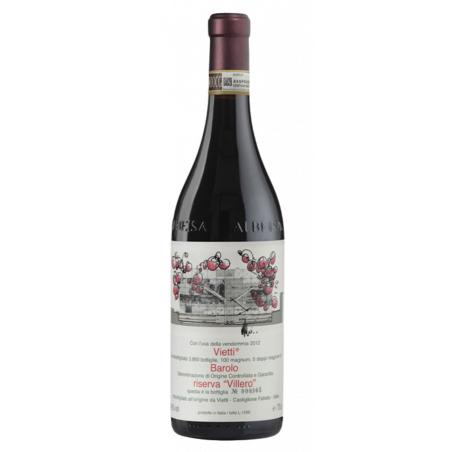- Pays:
- Italie
- Région:
- Piémont
- Appellation précise:
- Barolo
- Millésime:
- 2012
- Couleur:
- Rouge
- Type de vin:
- Sec
- Format:
- Bouteille de 75cl
- Cépage(s):
- 100% Nebbiolo
- Terroir:
- Sol argileux et marneux compact, avec la présence de marnes blanches et bleutées
- Âge des vignes:
- Environ 44 ans
- Rendements:
- 52 hl/ha
- Vinification:
- Fermentation alcoolique de 21 jours dans des cuves en acier. Malolactique effectuée en fûts et en grandes barriques.
- Elevage:
- En fûts de chêne Slovénien
- Degré:
- 14%
- Boire à partir de :
- 2022
- Apogée :
- 2027-2032
- Boire avant :
- 2037+
- Conseil de service :
- Carafer longuement dans sa jeunesse
- Servir à :
- 17-18°
Description
Les vignes de Villero sont orientées sud / sud-ouest, parcelle située sur la commune de Castiglione Falletto, d'une superficie d'un peu moins d'un hectare. L'âge moyen des vignes est d'environ 45 ans plantées sur un sol plutôt argileux et compact avec présence de marnes blanches et bleutées.
Vinification très classique, après la fermentation alcoolique qui a duré 21 jours en cuves inox à une température comprise entre 28 et 32 degrés, le vin est immédiatement entonné en fûts pour la fermentation malolactique, par le suite le vieillissement se passer en foudre de chêne de 27 hectolitres.
Cuvée mise en bouteille, sans filtration, le 16 juillet 2015.
Sur le millésime 2012, 3 860 bouteilles ont été produites, 100 magnums, 5 doubles magnums.
Suggestion gourmande
Poulet de Bresse à la crème, champignon et tagliatelles fraîches.

